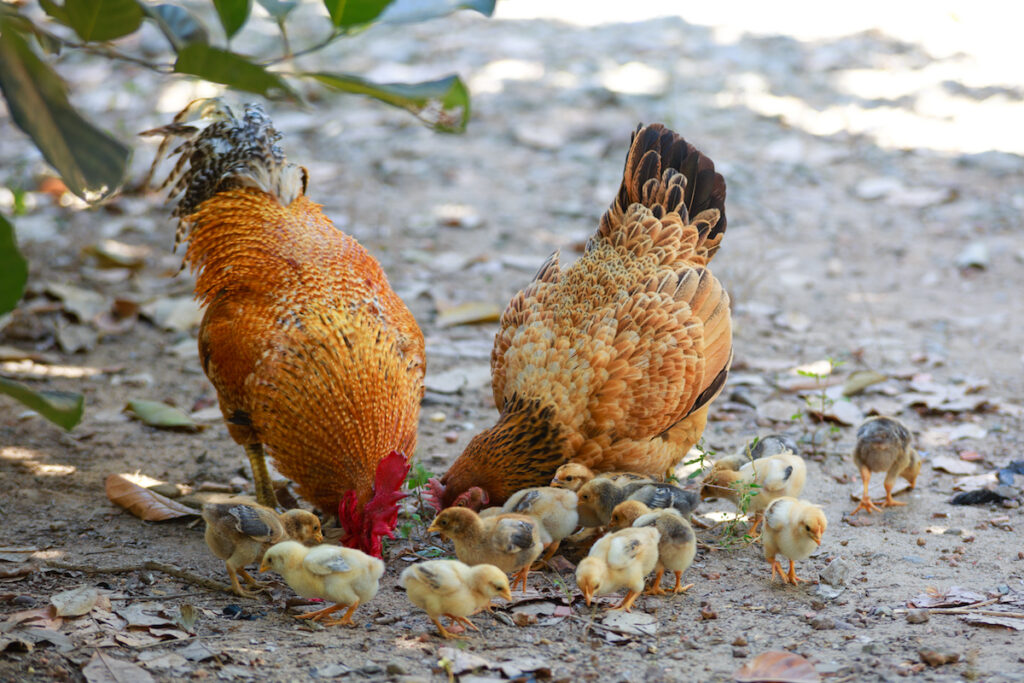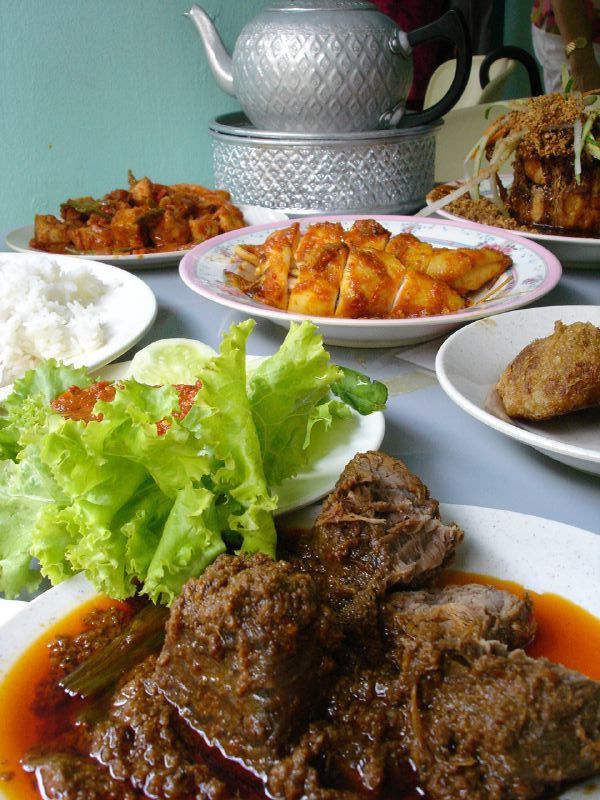This means ‘eat kampung food’ in Malay. In old Singapore, you would have seen kampungs (attap hut villages) everywhere. Hari Raya Haji is a time for reflecting and family gathering, and enjoying home-cooked Malay food
By Carol Kraal


IF YOU ARE FORTUNATE to get invited for a meal in a kampung house in Malaysia or in Indonesia, you’ll discover how fresh and delicious the food is. Vegetables and herbs are plucked from the backyard; free roaming chickens are bred by the family; milk of freshly grated coconut come from the trees that shade the house; fish and crab caught that morning from the sea; and shellfish collected at low tide. Add to this the recipes that have been handed down generation after generation by the sun-brown Malay womenfolk.

As these humble homes rarely have refrigerators the ingredients have to be caught or collected daily. That’s why freshness always characterises kampung food. All you have to do is walk around the garden and you’ll see everything that will go into the cooking. Walk further to the beach, the boats, the fishing nets and the bounty of the sea.
In Singapore, the kampungs may be long gone but the the spirit of kampung cooking remains alive. Only the freshest ingredients are used and are cooked with respect and love following a short prayer.

TYPICAL KAMPUNG FARE

KERABU PUCUK PAKU A salad of fern tips with grated coconut, chilli, lime, onion, dried shrimp, ginger bud and sugar.
MASAK LEMAK IKAN BELIMBING Fresh mackerel cooked in a curry of coconut milk, chilli, turmeric and small carambola (belimbing). The carambola gives a hint of refreshing sour.
OPOR AYAM Chicken fried in a reduction of coconut milk, galangal, lemongrass, garlic, peppercorns and shallots.
MASAK KETAM NENAS Fresh Blue Swimmer crab in a curry of pineapple, chilli, coconut milk, turmeric and shallots. The pineapple gives the curry a sweet sour touch.
NASI KERABU Rice with grated coconut, salt fish, shallots and turmeric tossed with shredded herbs (daun ulam). These herbs include mint, pennywort, cashew leaf, coriander leaf, kaffir lime leaf, polygonum leaf (daun laksa), ginger leaf and wild pepper leaf among others.
RECIPE
SIPUT MASAK LEMAK
Sea snails in spicy coconut gravy. Recipe by Azizah

Serves 4
2 kg sea snails
1 stalk lemongrass, bruised
1 turmeric leaf (daun kunyit)
3 kaffir lime leaves
1/2 tuber sweet potato, peeled and cut into cubes
1 fresh coconut grated for milk
4 cups water
4 tablespoons cooking oil
Pinch of tamarind
Salt to taste
Blend together:
1 big yellow onion
5 cloves garlic
2 cm fresh turmeric
6 green chillies
1 cardamom pod
Soak the snails in water for 24 hours. Wash thoroughly. Snip off pointed ends of snails. This allows us to get at the fleshy morsel by sucking the other end.
Mix grated coconut with tamarind and four cups of water and squeeze a round of thick coconut milk. In another bowl, repeat process for thin coconut milk. In a wok or pot heat the thick coconut milk for five minutes and add in the blended ingredients. Cook for ten minutes then add salt, lemongrass, turmeric leaf, sweet potato and thin coconut milk. When the sweet potato is half cooked add the snails, cook for eight minutes, dish out and serve.
WHERE TO MAKAN KAMPUNG IN SINGAPORE
HAJAH MAIMUNAH RESTAURANT
20 Joo Chiat Rd, Singapore 427357
Go for an early lunch at 11.30am for freshly cooked food.
HAJJAH MONA
Stall 200 Geylang Serai Market and food centre
Hajjah Mona has been selling her delicious fare for 30 years. Favourites include Nasi Ambeng (rice dish) and Rendang (beef with spicy coconut gravy).
RUBIAH MALAY FOOD
887 Bukit Timah Road, Singapore 279896
Homestyle Malay comfort food. Don’t miss the fried chicken.
SARI RATU
Lovely food with origins from West Sumatra. Brinjal Chilli and Beef Tendon Curry are some of the highlights.
304,Orchard Road, #02-107 Lucky Plaza, Singapore 238863